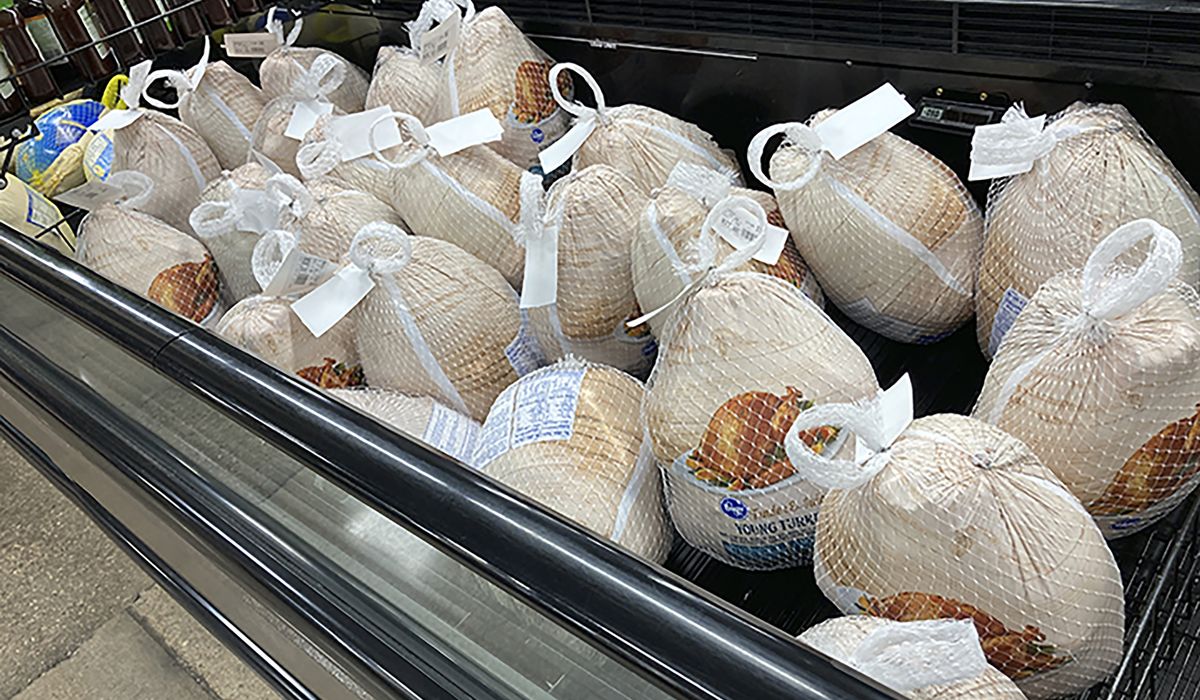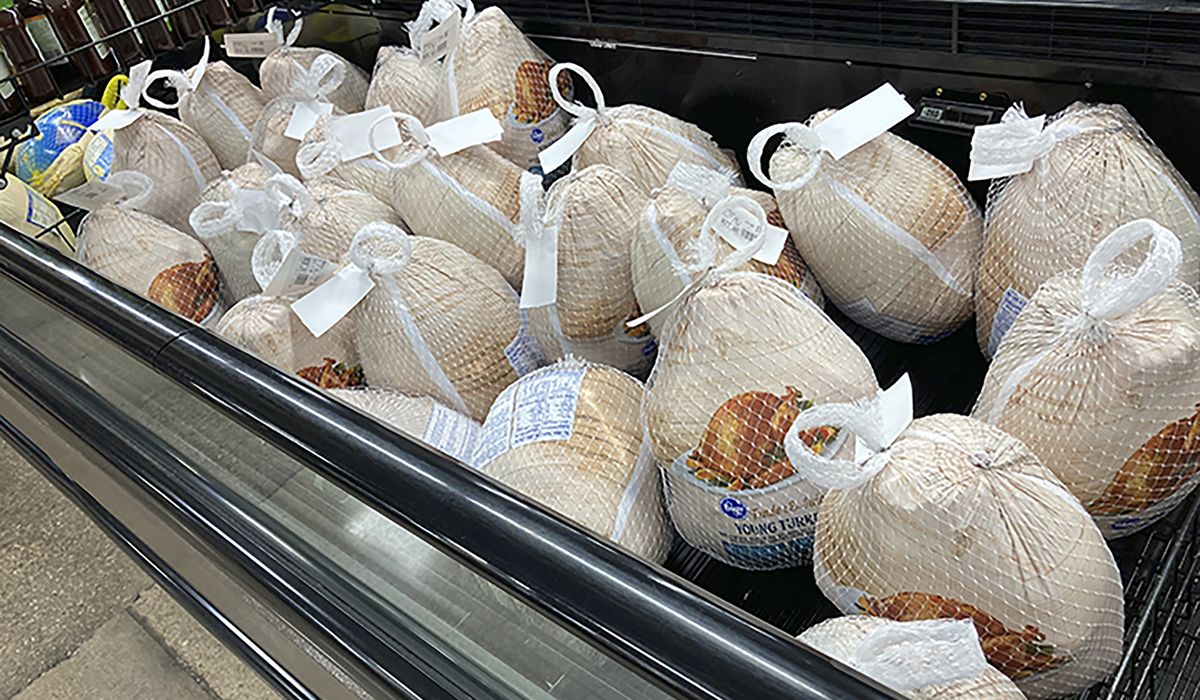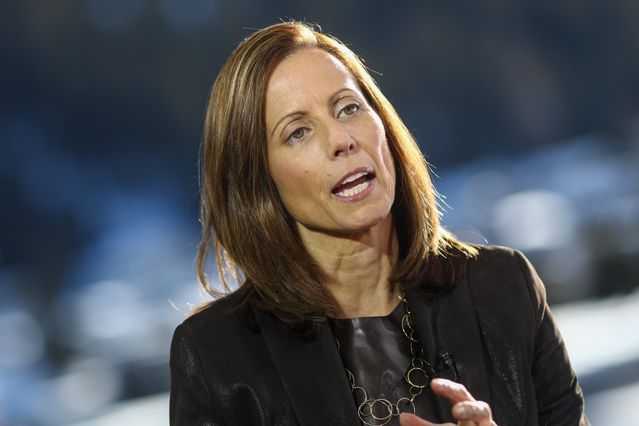
Supply chain issues, labor shortages and inflation have driven up the cost of Thanksgiving, raising the price of an 8- to 16-pound turkey by 20.2% over last year, according to government estimates.
An 8- to 16-pound turkey cost $1.36 a pound last week, compared with $1.13 at the same time last year, according to the U.S. Department of Agriculture. The American Farm Bureau Federation estimates that the classic Thanksgiving feast will cost $53.31 this year, up from $46.90 last year.
Christine McDaniel, a former deputy assistant secretary of the Treasury Department, said the price of a whole turkey in the U.S. has been rising for a while, but “that increase is showing even higher this year” because of the nation’s economic problems.
“It is not really a shortage of turkeys, but rather a shortage of laborers to do the work that it takes to get those turkeys ready to be packaged and the tightness in the trucking industry to get those packaged turkeys shipped to the stores,” Ms. McDaniel told The Washington Times. “This all means higher prices.”
Leading supplier Butterball reported that the worker shortage left turkeys to grow on farms longer than usual, making it harder to find smaller birds this year.
“Most people will likely be able to find a turkey if they want one but maybe not the size they want,” said Ms. McDaniel, a senior research fellow at George Mason University’s Mercatus Center free market think tank.
Walmart and Target released earnings Tuesday showing they are well-stocked with domestic fowl despite the price increases.
Last week, the Beaumont Enterprise news outlet reported that several Texas companies “hampered expectations” for the availability of smaller birds and fresh products “due to processing plant constraints” arising from labor shortages and supply disruptions.
John Rosen, a professor in the Pompea School of Business at the University of New Haven in Connecticut, estimated this week that Thanksgiving turkeys ultimately “will cost about 25 cents more per pound versus last year.”
“But that’s not the scary part. The scary part is that the drive to Grandma’s house will cost about $1.25 per gallon more than last year,” Mr. Rosen told The Times.
The U.S. Bureau of Labor Statistics reported last week that consumer prices jumped 6.2% for the 12 months ending in October — the largest inflation spike in more than 30 years — and 0.9% from September to October. Food costs jumped by 5.3% from October 2020 to October 2021, the agency reported.
Wall Street trader Charles Mizrahi, a financial pundit and author, said the rising cost of Thanksgiving reflects “how everyday Americans are bearing the brunt” of inflation.
“In addition to the turkey on their table this Thanksgiving, Americans will also be seeing the impact of supply chain issues, COVID and Washington’s terrible fiscal spending right next to the yams and gravy,” Mr. Mizrahi said.
The USDA projects that costs of food at home will be up 2.5% to 3.5% for the year.
Iain Murray, a senior analyst at the libertarian Competitive Enterprise Institute, said government regulations could be feeding the inflation.
“The main reason why Thanksgiving will be so expensive this year is that local, state and federal policymakers have allowed sclerosis to build up in the supply side of the economy,” Mr. Murray said.
He said tariffs drove up the prices of supplies, energy restrictions increased fuel costs and more tariffs led to a shortfall in truck chassis. California regulators have banned older trucks, and labor unions have kept ports from reopening 24/7, he said.
“With demand extremely high, all these and more regulations have combined to lengthen shipping times, reduce supply and raise prices,” said Mr. Murray, who directs the free market think tank’s Center for Economic Freedom.
Ken Cassar, vice president of commercial vertical for market data collector Premise, said a digital study running through next week shows groceries well-stocked with six Thanksgiving staples: turkeys, yams, stuffing, cranberry sauce, gravy and potatoes. Still, the items are more expensive than expected.
“With some exceptions, consumers are finding items well-stocked if a bit more expensive thus far,” said Mr. Cassar, who noted that the study involved consumers reporting back directly on what they found in their grocery stores.
The higher prices could increase pressure on families struggling with food insecurity, broadly defined as a lack of “reliable access to a sufficient quantity of affordable, nutritious food.” According to a September USDA report, 10.5% of U.S. homes were food insecure in 2020.
Ms. McDaniel, the former Treasury official, said Americans also will have to accept that inflation may not end anytime soon.
She said this year’s holiday price spike “means firms are paying more for their inputs, which leads other firms to raise their prices.”
As a result, she said, workers start demanding higher wages.
“We could be in for some rough times ahead unless the Fed can get these inflation pressures under control,” Ms. McDaniel said.








